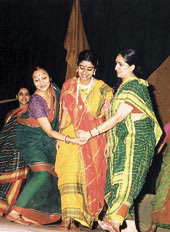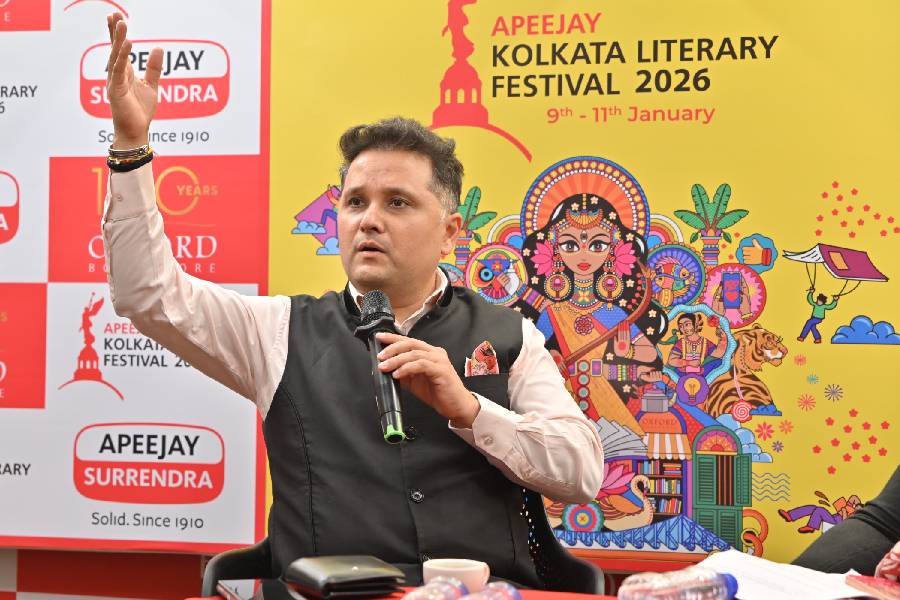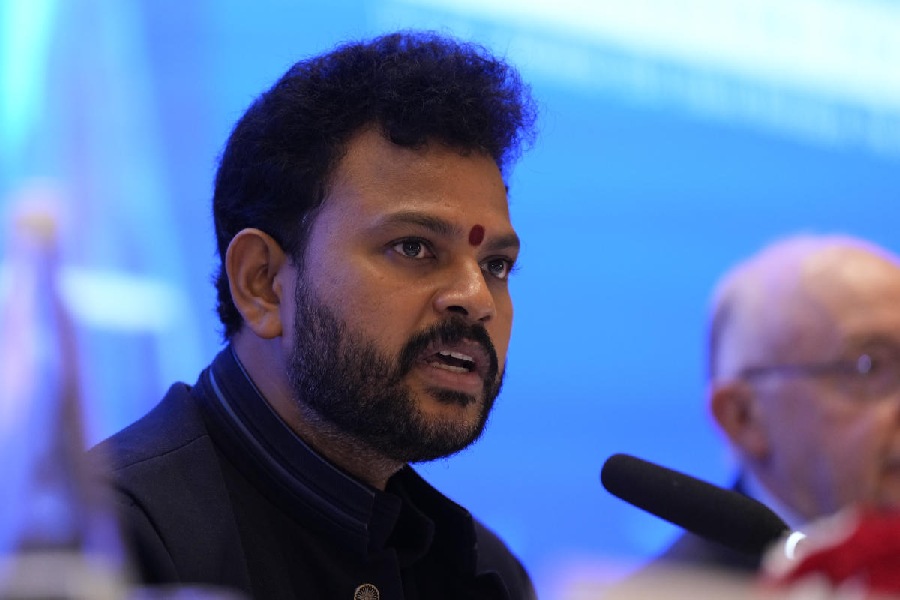 |
| A moment from Bhadreswarir Galpo |
Tales and fairytales of kings and countrymen, honour and justice, religion and robbers? Not issues commonly touched upon in modern theatre. Experimental theatre is making inroads into the urban cultural scene, but folk theatre is still far behind. It is to highlight the inherent traditions and qualities of this art form that the Eastern Zonal Cultural Centre (EZCC) has organised a seven-day folk theatre festival this month.
The National Folk Theatre Festival is being held in association with seven other zonal cultural centres around the country, with a group from each region performing at the gala. It will then travel to the other regions. Calcutta is the starting point, from February 20 to 26. Plans are on to make it an annual affair.
?Issues like drugs, adultery and terrorism are generally addressed in modern theatre because that?s what we, the urban public, live with and what matters to us. Folk theatre is different in several ways. For instance, it uses a combination of song, dance and drama to express feelings,? explained Anuradha Mookerjee, director, EZCC.
?New forms must borrow from the traditional and vice versa. Folk forms take aspects from modern theatre, so there are elements of it. But it is still a separate art form, in a decadent state from neglect. We wanted to showcase it. In fact, most of us in the cities have rarely seen folk theatre,? added Mookerjee.
The festival, entry to which is free, kicks off with a play from Bengal, Bhadreswarir Galpo, based on a folk tale from Panchakot, near the Bankura-Purulia border. The Nabamayukh Natya Sanstha production focuses on the origins of the Bhadu festival, celebrated in parts of Bengal and Jharkhand. Legend has it that Bhadreswari was the only daughter of Kashiraj of Panchkot, and the people loved her and celebrated her marriage to the prince of Burdwan.
Day Two will find a naqqal performance from Punjab; then it?s a nautanki, called Pukar, about communal harmony and the qualities of a good ruler, embodied in Shahenshah Jahangir.
On the fourth day is shumang leela (courtyard theatre), from Manipur, usually performed by all-male troupes. Restaphen is based on a boy who loses his parents in the war on terrorism in Afghanistan post-September 11.
On February 24 is Draupathi Vasthrabaranam, an episode from the Mahabharata, presented by a group from Tamil Nadu. Swang, a form of folk theatre from Bundelkhand, is scheduled for February 25. Raja ki Poshak is a take on the The Emperor?s New Clothes. On the final day is a Rajasthani performance, Raja Jagdev Kankali.
We always try to do something that no one has ever done before, says playwright and director Yoji Sakate, whose Yaneura (Attic) was performed last week in Japan. It crams in as many as 13 actors at once into a 19-sq-ft space.
Yaneura, a surreal dark comedy made up of 24 seemingly unconnected vignettes, plays off the Japanese phenomenon of hikikomori. The phrase, which translates into English as ?withdrawn?, describes people who are so disconnected from the outside world that they refuse to leave their homes, or, in this case, their attics.
Shortly after Yaneura premiered in Japan in 2002, the BBC reported that more than a million Japanese young people, mostly boys, had gone hikikomori, often simultaneously cocooning themselves from their families.
The members of Sakate?s Rinko-gun Theatre Company, which performed at Japan Society from Thursday to Saturday (in Japanese, with super-titles), have worked closely for years. ?In these extremely close quarters and with such heat, there?s a feeling of never being comfortable in your own space or even having your own space,? says Sakate. ?This, conversely, gave the actors the distance to see day-to-day life with greater clarity.?
The biggest obstacles, he says, are logistical: how to light the space, how to modify the sight lines. The company collaborated on determining the angles of the attic, particularly the low roof, which ended up at a head-bumping four feet, with a severe slope.
Sakate, who founded Rinko-gun in 1983, said he originally envisioned Yaneura as science fiction. But shortly after its premiere, reality caught up with him: soundproof room-like units almost identical in size to the Yaneura set were being sold in Japan for hikikomori purposes. So now, Rinko-gun designs and manufactures replica sets.










